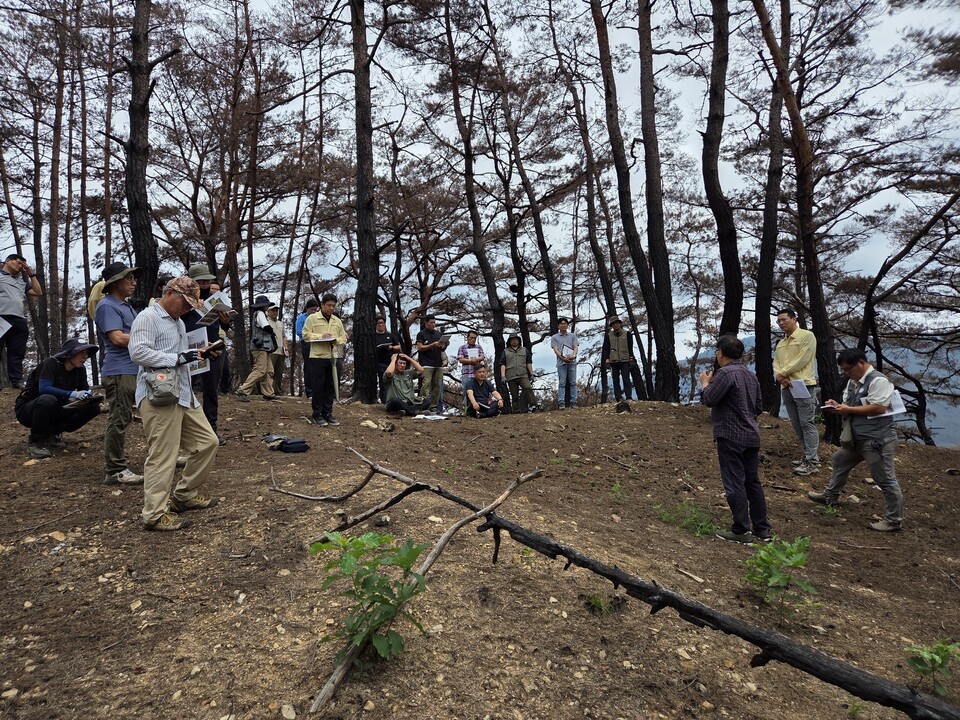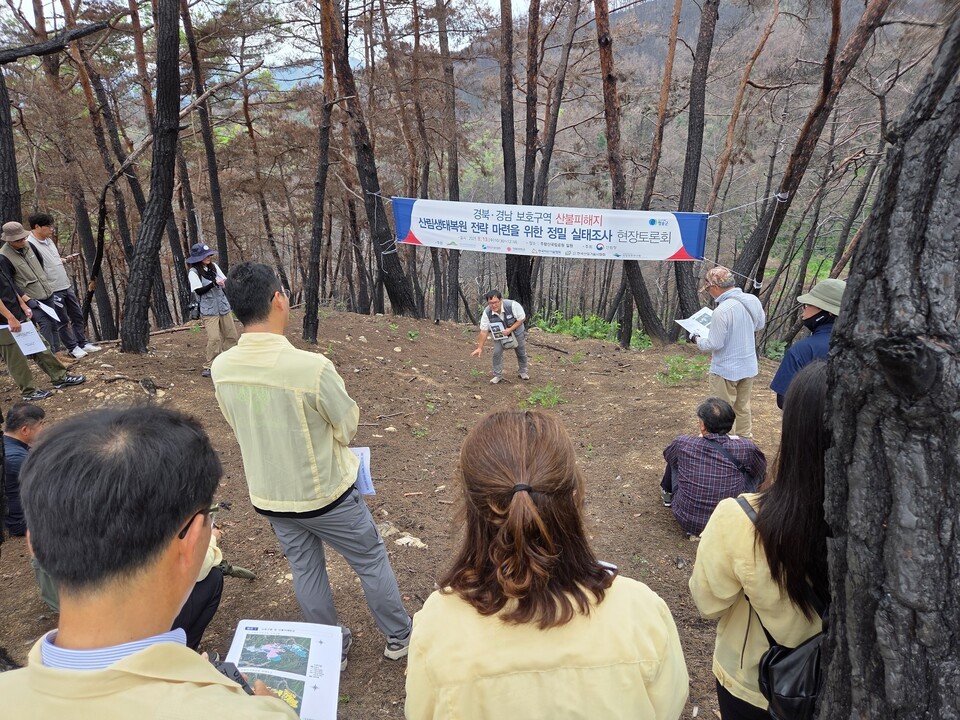The Korea Forest Service (Director Lim Sang-seop) announced on the 13th that it held an on-site discussion to discuss ecological restoration plans for areas affected by forest fires in designated protected zones such as Juwangsan National Park in Cheongsong-gun, Gyeongsangbuk-do.
The discussion was attended by forest owners who suffered damage from the fires, local residents, civil groups such as the Citizens’ Coalition for Protecting National Parks and Forest for Life, local government officials, academic experts, the Korea National Park Service, and the National Institute of Forest Science. During the discussion, they reviewed the scope and methods of forest ecological restoration based on the results of a preliminary detailed investigation conducted by specialized institutions into vegetation, soil, and other factors.

Forest ecological restoration is a project aimed at stabilizing the plant base and promoting ecosystem resilience by utilizing native plants and natural materials around damaged areas.
The Korea Forest Service plans to establish an ecological restoration strategy for burnt areas within protected zones by September, reflecting the opinions presented at this discussion and the recovery status of the forest. They will then prepare a basic restoration plan within the year and implement restoration efforts incrementally starting in 2026.

Meanwhile, in March, simultaneous large-scale forest fires occurred in the Yeongnam region, resulting in the loss of a total of 104,000 hectares of forest. Among these, the legal protected areas, including national parks and forest genetic resource protection zones, accounted for 3,834 hectares of the lost area, equivalent to the size of about 5,300 soccer fields.
Choi Young-tae, Director of the Forest Protection Bureau at the Korea Forest Service, emphasized, “There is a need to restore the forest in protected areas to be ecologically healthy and resilient to disasters, considering their designated purposes,” adding that they will “collaborate with local governments and related organizations such as the Korea National Park Service to develop a rational ecological restoration strategy.”